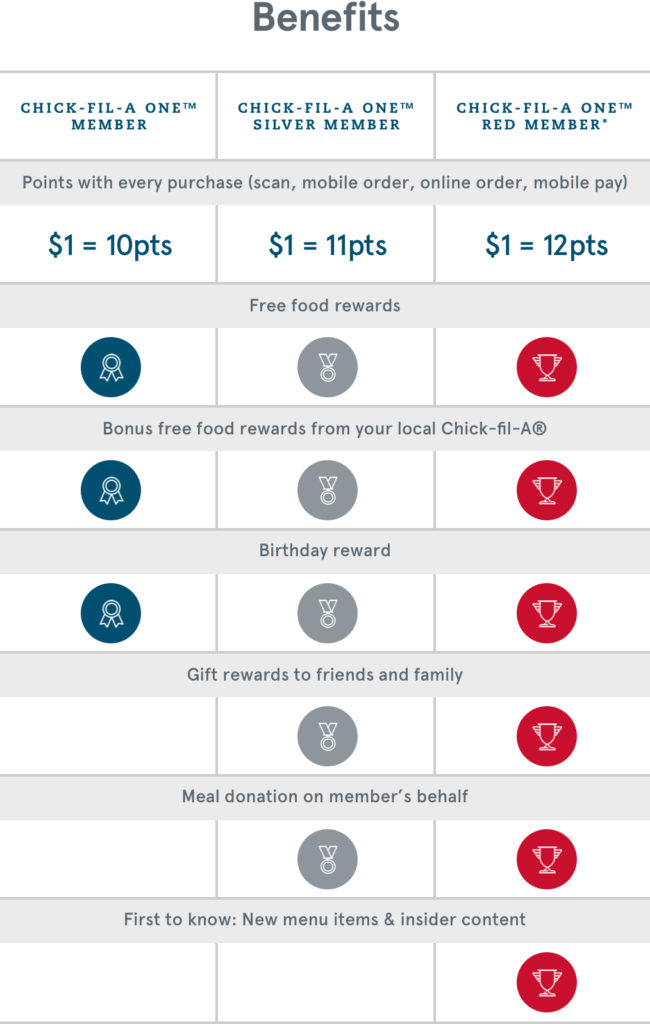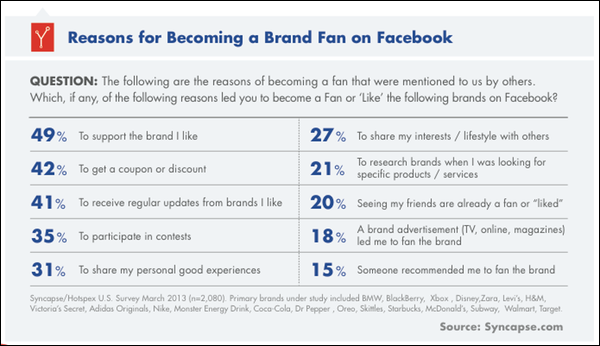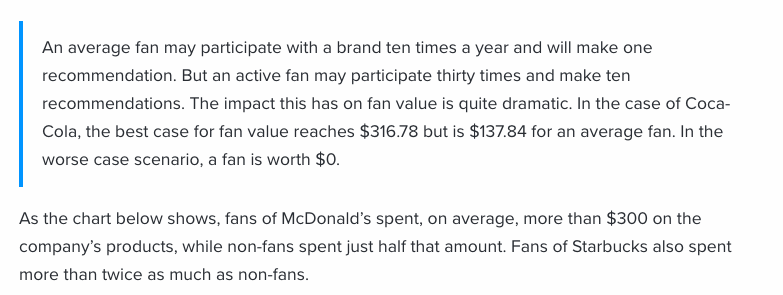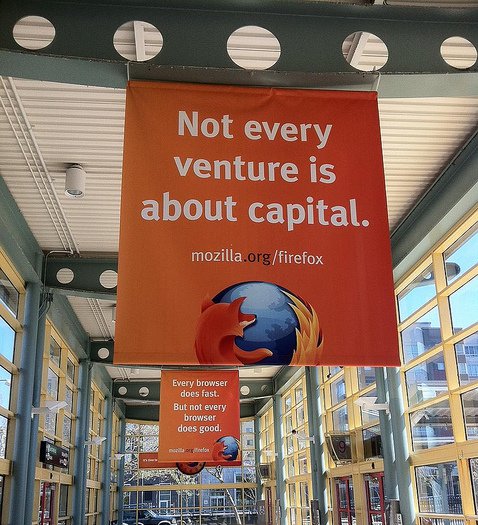They say, “All you need is love,” right?
But, most people don’t think of business this way.
Or do they?
Because the numbers suggest that they do, people are probably more caring than they want to believe.
At least, when we look at the numbers, that’s what we see.
Let’s explore how you might be acting more out of love in your pursuit of business success than you think. And why this behavior isn’t unique; almost all successful entrepreneurs put love — NOT money — first.
1. Passion Leads the Way

You’ve probably heard it more times than you can count. “Follow your passion.”
But the debt of whether to follow your passion or follow the money never ends. And maybe there’s truth somewhere in the middle of these extremes. You probably should follow your passion profitably.
A 2015 InfusionSoft market survey on small businesses revealed the following:
Passionate creators make the most money in their space. Based on the InfusionSoft study, 14 percent of these passion-driven business people make over $1 million in revenue every year.
According to the study, passionate creators own more businesses. Forty-one percent of them own two or more companies.
And these heart-centered creators are more driven, for longer. InfusionSoft says that 43 percent of these business people stay in business for more than a decade.
And why are passionate people more successful? Well, very few people can sell products that they don’t believe in.
Why passion drives entrepreneurship success
In case you’re wondering why passion drives entrepreneurs, let’s look at what seems to be the two biggest reasons here.
1. Deep-rooted conviction
A passionate entrepreneur believes in the problem he sets out to solve. He also believes in the solution he’s offering. This attribute sets him apart from others who are in for the quick buck.
2. Grit and perseverance
Passion fuels a stubborn resolve to tweak their solutions as often as necessary to meet their customers’ needs. This grit and focus often lead them to create the most viable product in the long run.
A Case In Point
Sir Richard Branson founded his bank by drawing from his true passion, customer service. During the financial crunch of 2008 through 2009, he saw an opportunity to start a bank. However, it was his passion for customer service, NOT banking itself, that got him into starting the business.
In his words,
“Passion for customer service into an industry that was known for a lack of it… This is the fundamental reason why we got into banking in the first place… We didn’t just have a passion for finance – we were passionate about making it accessible and understandable.”
His goal was to make customer service the bedrock of his company. Like any of his other ventures, he achieved enviable success despite being a new entrant in the scene.
2. Customers Love to Stay Loyal

Founding your business off passion is fantastic.
But having customers who buy from you and want to keep buying from you is the nirvana of business success.
Statistics show that it cost 5 to 25 times the effort to win a new customer than to retain an existing one.
In other words, customers who already buy from a business want to keep buying from that business.
They want to be loyal.
Customers reward passionate businesses with loyalty. Studies show that businesses that can improve customer retention by 5 percent can raise their profits by as much as 25 – 95 percent.
Customers who fall in love with your offerings rewards the business with more money. They spend more and tell more people about you.
Loyalty programs initiate this customer reward by first aiming to reward the customer. They take notice and then reward your business in return. You want to prioritize their experience over anything else.
A Case In Point
Chik-Fil-A overtook MacDonalds and KFC food businesses in 2017 and dominated the fast-food industry. The company recorded a revenue of 4.4 million over KFC’s 3.3 million and McDonald’s 2.2 million.

This success came from Chik-Fil-A’s successful loyalty program that rewards regular customers. According to recent stats, the fast food giant has over 13 million subscribers to this program.
Another excellent example of this point is Panera. They generated over 1 billion in revenue in 2017 from loyalty programs. Their passion for customer service and convenience is in the heart of their program.

They developed queer but effective techniques such as ‘drive-thru’ service. Customers could make orders and ‘drive through’ to pick them up without having to enter the restaurant.
Panera kept things simple. They made sure their program was so easy that anyone would understand it at first glance.
All these have built for them a loyal army of customers who love to patronize their outlets.
3. Fans Support Businesses Via Facebook Page Likes

The stats are unequivocal. Social is here to stay.
Over 90 percent of businesses are gaining remarkable traction and sales from social media exposure. Another 41 percent of small business owners depend on social media to drive their revenue.
Research says 76 percent of consumers buy products they’ve seen on a social media post.
Facebook is the most significant social platform in the world presently. And businesses that are serious about growing and retaining their customers must leverage the platform.
Savvy businesses are using Facebook pages to engage their customers. Forty-nine percent of survey participants say that they show support for a brand by Liking it.

Likes and Shares are your business’s priced engagement points for your growth. Here’s why.
i. People Who Like Your Pages and Posts are Engaged Users
Facebook’s statistics showed that those who use ‘Likes’ have more friends on average than regular users. They are also 5.3 times more likely to research companies they come across on Facebook. Even if it means leaving Facebook for the company’s site.
ii. The Potential of a Mini Email Marketing List
People who like your page can receive messages from you. This opportunity provides an avenue for you to reach out to potential customers with a new offering and mouthwatering offers.
iii. Fans of Your Page are Valuable Revenue Sources
Research by Syncapse reported by Gigacom suggests that the value of a page follower on Facebook is as high as $136.38.
They also found out that fans are more likely than non-fans to recommend your business to others. This discovery is in sync with another finding that fans are 28 percent more loyal to a brand than non-fans.

iv. Facebook Likes Give Your Business More Exposure
The Facebook pages structured encourage interested customers to find out more about your business. Your site can benefit from traffic referrals due to your Facebook page. Plus, each extra visitor is a potential lead and revenue source.
v. Free Analytics
Facebook pages provide you with insight into the page visitors’ demographics. You can see where they are coming from and how they interact with your content.
This analytical advantage provides valuable information to help you decide on your business strategy for conversions and profits.
4. Buyers Shop Ethical and Charitable Brands

A survey shows that that 73 percent of millennials favor brands that have a history of giving back to the community.
Another study showed that 81 percent of millennials want companies to show support for causes publicly. Think of “demand for public affection.”
Given that they will form 50 percent of the workforce by 2020, it’ll be in your best interest to get them on your side.
Already, millennials spend more than other generations on household items and other expenses. This trend also means you can get more profit by getting them on your side.
Lots of companies have noticed this trend and are now invested in getting millennials on their side. The volume of corporate giving increased by 8 percent in 2017.
A Case In Point
Google, Microsoft, and Apple lead the pack amongst companies giving to charities. These tech companies use diverse forms to inspire brand loyalty using various volunteer initiatives.
Google allows its workers to take out company time and devote it to volunteer service.
Microsoft follows a similar trend. They donate to charities for every four hours of volunteer service their employees put into their community.
The software giant also give over $1 billion in hardware and software gifts to disadvantaged regions
It’s not just in tech. Other companies in the food business also keep up with this trend.

Campbell’s soup donates $1 million yearly to charities and volunteer causes. These donations go to their communities and local champions pursuing good causes. The result is a net positive perception of the brand by customers.
Ben and Jerry’s, another food business is dedicated to charities and volunteering.
The company pledged to give away 7.5 percent of its pre-tax profits to charities. They have never defaulted despite being acquired by the Unilever group.
This culture has improved the overall outlook of the company in their locality.
5. Users Trust Influencers More Than Their Friends

Perhaps we could rightly say that we are in the age of social media marketing.
Influencers form the core of this marketing group. They are directing more and more purchasing decisions in real life than ever before.
Statistics support that assertion as influencers are shown to command about 50 percent of buying decisions.
They influence just about everything, across all sectors, from hospitality to entertainment, tech to lifestyle. Brands are taking notice of influencers and are leveraging their influence profitably.
The result is encouraging. These brands report an average of $6.5 return on every $1 spent on influencer marketing.
Also, worthy of note is that people trust the opinions of influencers more than their family members.
As many as 90 percent of buyers would make a purchasing decision if an influencer recommended it. Only 17 percent of them would do so if a family member or friend suggested it to them.
The impact is obvious.
If you want to get your customers to pledge their loyalty to your brand, then it’s time you enlisted influencers on your side.
No, they don’t have to be the biggest influencers in your space. Local but visible influencer brands are also very effective.
A Case In Point
Blue Apron is a food business that sells pre-portioned ingredients to customers to cook at home.
In 2015 they scaled their influencer marketing and partnered with several food and lifestyle blogs. Each of these blogs wrote a blog post on the company and how their services worked.
Gradually, they began to see growth and increase in their customer base.
By 2017, they were popular enough to start sponsoring podcast channels to broadcast their products.
If Not Love, What Else?
So far, I’ve given you five reasons that imply that businesses thrive on love and not money.
- Love expressed by successful entrepreneurs in starting businesses that they genuinely care about.
- On the second point, ‘love for the brand’ is responsible for repeat purchases and a loyal customer base.
- The third point shows that love expressed by fans through brand Facebook “Likes” supports the organic marketing funnel that compounds the brand’s profits.
- The love for brands that do good in society leads more people to patronize charitable and ethical businesses.
- Finally, customers whose love for influencers and authorities can see them beat their path to the doors of businesses.
You’d probably agree more now, ‘love’ drives our business and consumer decisions — not money. Money seems like a byproduct of the love we share.
Share the love!

